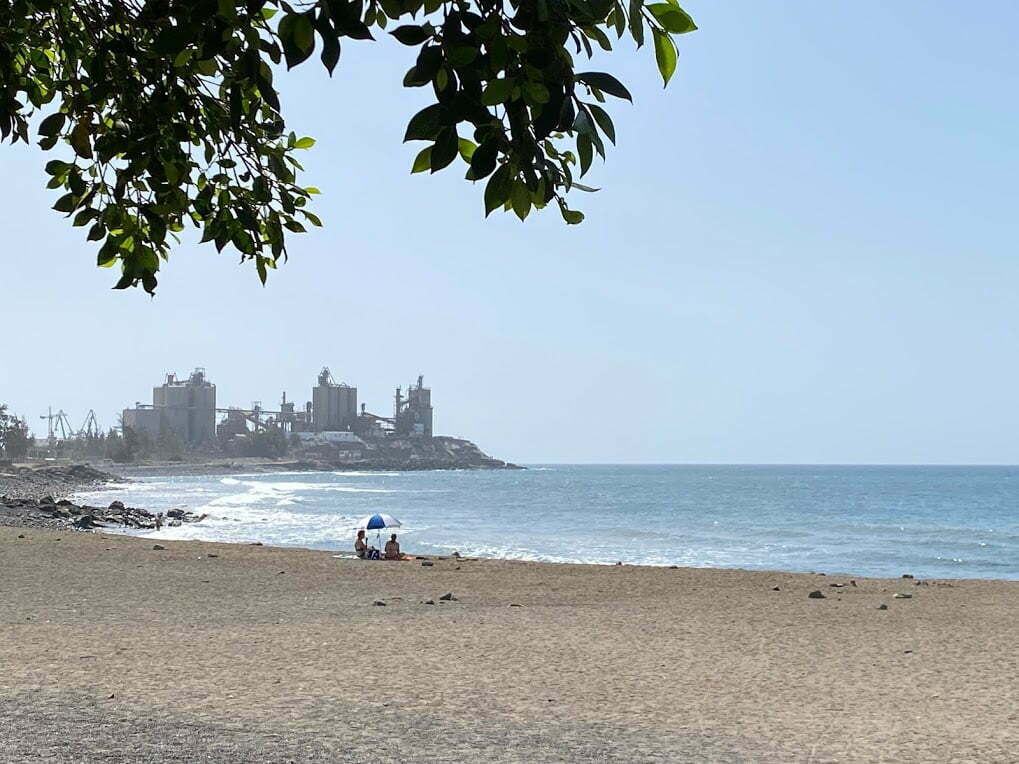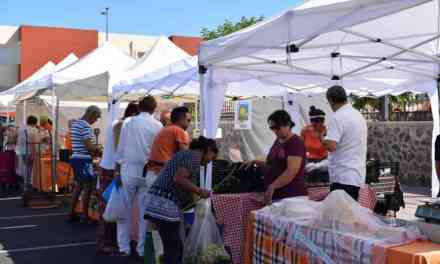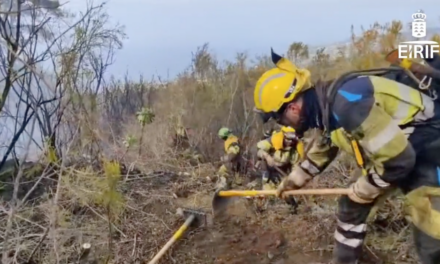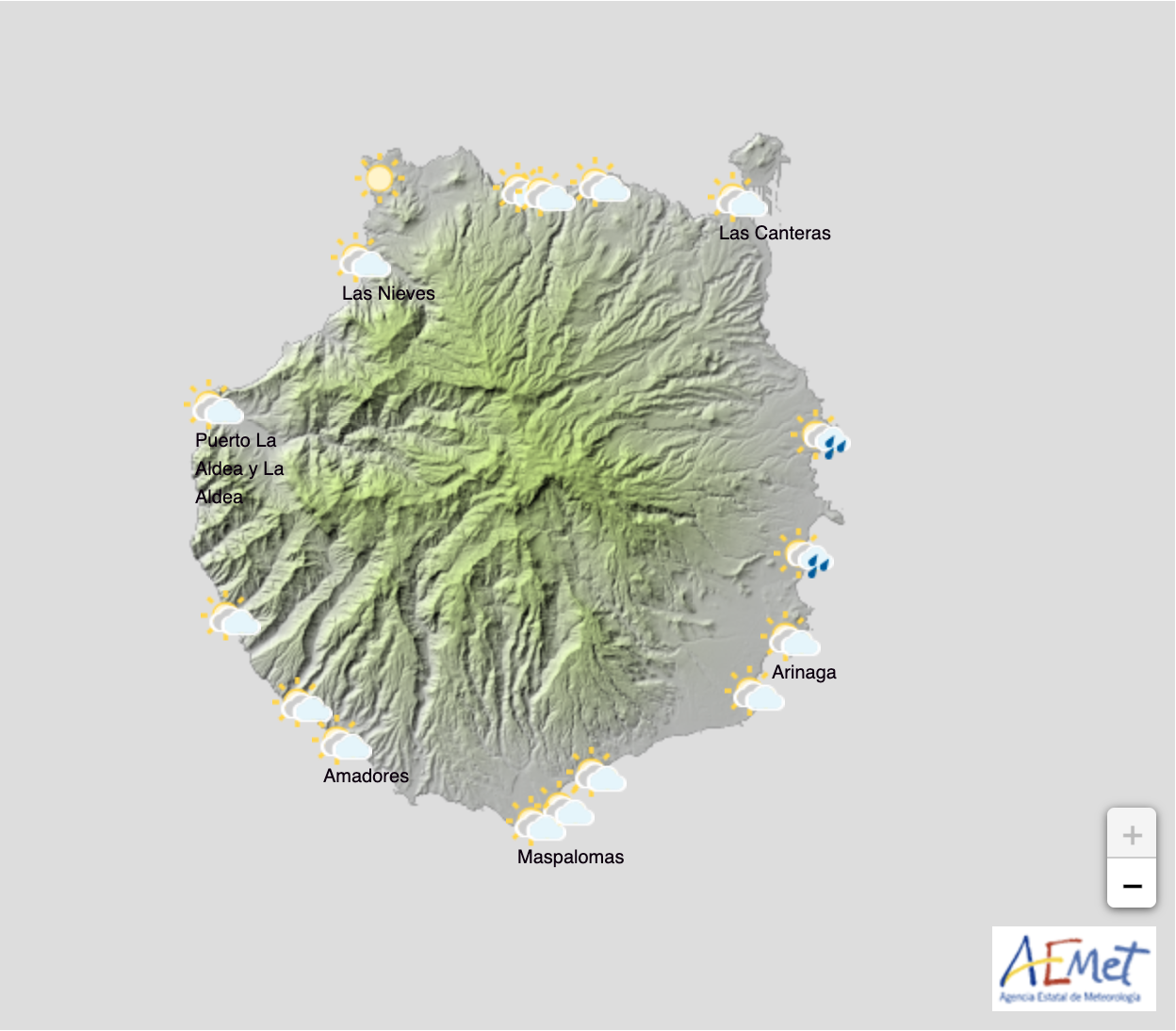On October 22, 2022 the concession for the deep water dock, used by the cement factory operated by Cementos Especiales de las Islas (Ceisa SA), in the port of Santa Águeda is due to come to an end after 65 years of use, however the company is hoping to renew their contract. The Government of the Canary Islands owns the port and will have to decide whether to extend the concession for the industrial facility to maintain activities there or alternatively follow the established 2003 planning document which designates the area for recreational use, and not industrial production. This transfer to touristic use is being strongly promoted by the Cordial Canarias Hotels & Resorts group and Fernando del Castillo, son of the ninth count of Vega Grande de Guadalupe whose family to this day own much of the south of the island, and who is also president of the Centre for Initiatives and Tourism (CIT), which since at least 1934 have been consistently active in the generation, formation, maintenance and promotion of tourism across Gran Canaria.
Extended from an original article by Ivan Suarez of CanariasAhora
In the latest edition of a Television Canarias program, writes Ivan Suarez of CanariasAhora, directed and presented by the journalist Carlos Sosa entitled Informe Trópico, the different positions in the debate around the enclave’s future are analysed, exploring the arguments for continuing to dedicate El Pajar, in the municipality of San Bartolomé de Tirajana, to industrial activity, in a place visible from the neighbouring fishing-cum-tourism town of Arguineguín, on the Barranco de Arguineguín boundary with the municipality of Mogán, an area along the GC500 old coastal road that remains one of the few such territories on the south of the island to still remain almost totally untouched by tourism.
There is a deadline coming before which the Government of the Canary Islands must issue an opinion, based on work being carried out by a Ministries of Public Works, Tourism and Ecological Transition commission, following more than a year of meetings between all the interested parties. The conclusions will be made public, but they will not be legally binding. Ceisa wishes to remain in El Pajar “for as many years as the company deems” appropriate on the land it owns, classified as urban for industrial use, where the factory is located. In doing so the company also aspires to maintain the port concession that, according to Claudio Piernavieja general coordinator of the company, “was built by the company itself in the 1950s”.
Piernavieja explains that the activity of the cement company, dedicated “to mixing stone to make the cement that the Canary Islands need”, is based on three pillars: the quarry, two kilometres inland from El Pajar, the factory and the port. “The dock is fully integrated into the factory and if we lose the concession, we would lose one of the three fundamental pillars. The implication would be having to transport raw materials going to the factory via the highway, entering and leaving through another port. This would mean putting around a hundred trucks a day on the southern highway, which also implies about 3,000 tons of CO2 a year,” says the Ceisa coordinator, pointing out that the company is currently responsible for maintaining the dock and paying the corresponding rates.
Supporting the continuation of the cement factory is a neighbourhood platform, named Saving the Bay of Santa Águeda, who want them to remain in El Pajar and that its concession on the dock be extended because, they say, in all the years they have been there “we have coexisted without problems”, and if the factory moves to another area, the members of the neighbourhood enclave are concerned by the large number of changes that will likely occur so that the area can be used for tourism. “We want to save our environment, where we live, to be left alone. We are not against tourism, [it’s] welcome, there are more jobs, but let us live together. So that the beach at El Pajar can be for birdwatchers and for the entire Canary Islands, and not be like Pasito Blanco”, says one member referring to the gated community that was built with public investment but remains very much an area apparently reserved for just a few who live there or use the harbour.
The mayor of San Bartolomé de Tirajana, Concepción “Conchi” Narváez, also expresses support for the cement company, for various reasons, “beyond business, they are more focused on that special touch, that soul of El Pajar, just as it is right now, a human value. It is a very important piece that other destinations do not have.” She considers the cement company “a key part of the municipality” and, specifically, “El Pajar has grown and developed hand in hand with the Cementos Especiales industry. There are generations that have worked in this industry. The bond and the emotions of the majority of the residents of this municipality are normal.” she says
In addition, the mayor states that “it has been shown that the coexistence of industry and tourism is fully compatible.” She points out that San Bartolomé de Tirajana, which includes resorts like Playa del Inglés and Maspalomas, already has “wonderful hotels, top-level tourist areas, but the soul and essence that El Pajar has is difficult for others to have; if Cementos Especiales decides to leave, it will be exclusively touristic”. Narváez also points out that “tourists are increasingly demanding and are not just looking for a new beach or good weather, a good hotel or good accommodation. They also seek to be close to Canarians, to learn about their customs and traditions. And El Pajar has that.”
An untapped tourism gem
On the other hand, Fernando del Castillo urges tourism reconversion of an unexploited area with great potential. Despite the fact that his family owned the land, that it ceded to the cement company in 1957, and participated as shareholders, even having worked within the company, the president of the CIT has led a movement for the company to leave El Pajar. “After 65 years, in which the family put some land in concession for the company in which it later participated, the conditions are completely different,” he justifies. He does not want the concession to be renewed.
To do otherwise, “would be nonsense”, underlines Mister del Castillo, who is appealing to the Government of the Canary Islands to make “a brave decision in line with the existing urban planning that dictates this area should specialise in tourism”. Specifically, he asks the Executive not only to withdraw the concession to CEISA, but also to transfer their business to another area. “That a harmonious transfer can be agreed upon that benefits Gran Canaria. It would be going out through the front door and not via a long-term marathon race in which the cement workers insist on continuing with that mess for many years,” he says.
The noble Del Castillo family were the primary promotors of tourism, on their lands across the south of the island, having played a large role in civil and urban development for centuries, their influence was also exercised in the port authority’s original granting of the concession, and their lands then used to create the factory, ceded to the company CIESA in which they were also shareholders. It seems that two generations on and the heirs to the Del Castillo lands no longer wish for their earlier investments in cement and aggregates, stone, sand and lime, extracted from their own natural resources on these lands and then sold to the developers who originally bought licences from them to build all the hotels on this end of the island, to now hinder their future plans for the development of tourism.
While the urban planning documents may well designate these coastlines for tourism, what designation should be given to the people who live and work in those coastal communities, in the industries from which tourism is made? Should tourism be at their expense, should their community be protected or is change inevitable?
The Cordial Hotels & Resorts company expects the port to be reconverted for recreational and leisure use, which is why it has already made significant investments in the area. “We have invested more than €50 million in the first phase, with the Resort Cordial & Santa Águeda and the Perchel Beach Club”, explains Nicolás Villalobos, general manager of Cordial Canarias Hotels & Resorts.
Villalobos makes clear that “the planners understood that all this land reserve, that goes from Pasito Blanco to the mouth of the Arguineguín riverbed, had to be specialised for tourism in order to continue generating wealth and economic activity.” And so, he assures, “it has been arranged and determined in the planning instruments”, that is, “that at the expiration of the concession, the port should cease to have industrial use and become leisure and recreational.”
The general director for Cordial Canarias Hotels & Resorts points out that based on the “legal certainty that the administrations would enforce the rule” regarding the use of the dock, they have invested in what he considers “the best land in terms of tourist attraction on our island, right on the border between two municipalities, between San Bartolomé de Tirajana and Mogán”. In fact, they expected the Government of the Canary Islands to withdraw the concession as of March 2020, which is why they had gone to court to try to speed up the process, a move which was rejected. “The concession has expired, the cement producers have been in a precarious situation for more than two years. It continues to operate because the Government of the Canary Islands, owner of the port infrastructure, has not exercised its right and obligation to claim what is theirs”, he says.
Villalobos is also in favour of CEISA moving, although he clarifies that he is not against the company “doing what they want” on land that they own. “We do not want the cement company to leave Gran Canaria, we want it to continue, but in an industrial estate, not embedded in this strip of the southern coast,” he adds. And he brings up what happened when islanders, in the capital, protested to get the Colonial Insular Company for Electricity and Irrigation (CICER) to “stop producing electricity on the sands of Las Canteras.” Using the example: “We want electricity, but not in Las Canteras; we want cement, but we don’t want it to be produced at all on our south coastal strip”.
Proposals for the Santa Águeda wharf and its surroundings
 CEISA’s general coordinator explains that the company’s intention is to improve the surroundings of El Pajar, with an investment of €10 million. On the one hand, it aims to improve energy efficiency, with photovoltaic panels, to supply 20-25% of the factory’s energy consumption, and, on the other hand, it proposes extending the El Perchel coastal promenade; with recreation and natural pools in the western part of the factory; also creating 200 parking spaces and a semi-roundabout to help ease mobility.
CEISA’s general coordinator explains that the company’s intention is to improve the surroundings of El Pajar, with an investment of €10 million. On the one hand, it aims to improve energy efficiency, with photovoltaic panels, to supply 20-25% of the factory’s energy consumption, and, on the other hand, it proposes extending the El Perchel coastal promenade; with recreation and natural pools in the western part of the factory; also creating 200 parking spaces and a semi-roundabout to help ease mobility.
Santana insists that this project is not linked to renewal of the concession, but to improving the local environment, however he does believe that ownership of the port concession should be renewed “because this is a strategic industry for the Canary Islands.” In addition, he estimates that the cement plant remaining where it is would not exclude tourism activity. “This municipality is home to three economic sectors: agriculture and fishing, the cement industry, and tourism. We have lived in perfect harmony, we don’t think it’s time to remove one to replace with another. The three economic sectors must be harmonised” he says.
The entrepreneurs in the tourism sector, however, appear to have a more antagonistic vision. For Villalobos it would be an “unlawful” decision, if the Government of the Canary Islands renewed the concession to CEISA, that would harm the Cordial Hotels & Resorts group because they would not be able to make their investment profitable. “We do not want to file a lawsuit against the Government of the Canary Islands and we hope that this port will be used in the general interests of the Canary Islands, dedicating itself to recreational use,” says Villalobos, but, otherwise, “we would claim damages that the decision would cause us.”
For this recreational and leisure use, there are two proposals on the table: either a marina or a dock for cruise ships. Villalobos is in favour of the first option, similar to Puerto de Mogán, which “combines fishing boats with pleasure boats, being more authentic”. And he would prefer that tourists stay at Cordial Hotels & Resorts accommodation rather than on a cruise ship. But in any case, he believes that the decision must be agreed by several interested parties.
Fernando del Castillo has made clear that the proposal to create a port for cruise ships is from the CIT. “We have made a maximum proposal from the economic point of view to revalue that location. Today it is a port for large ships, since this infrastructure could also be used to accommodate cruise ships. That doesn’t mean it’s going to only have that use,” he explains.
The mayor of San Bartolomé de Tirajana has been able to study the proposals and, although she finds “the idea of creating a sports or cruise ship dock attractive”, at the same time she considers it “dangerous to eliminate industry and eliminate something that has been part of history”. From CEISA’s approach to improving the environment, Narváez claims that it is “ambitious” and “it’s time”, because after many years of operation, it’s time to update and modernise the environment”, as well as the aesthetics.
In any case, and whatever the Government of the Canary Islands decides, Narváez believes that “the conflict will not end” soon and “the problem will not be closed, because each group will continue to fight until a final judgment is handed down for their position”, since both perspectives “are legitimate.”


















